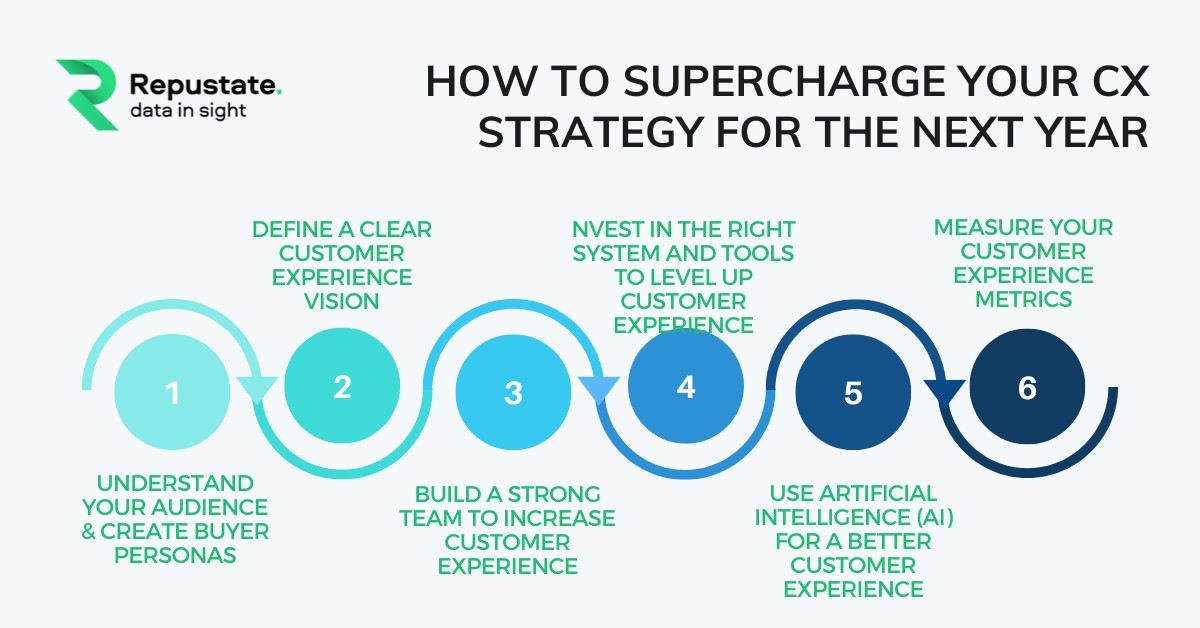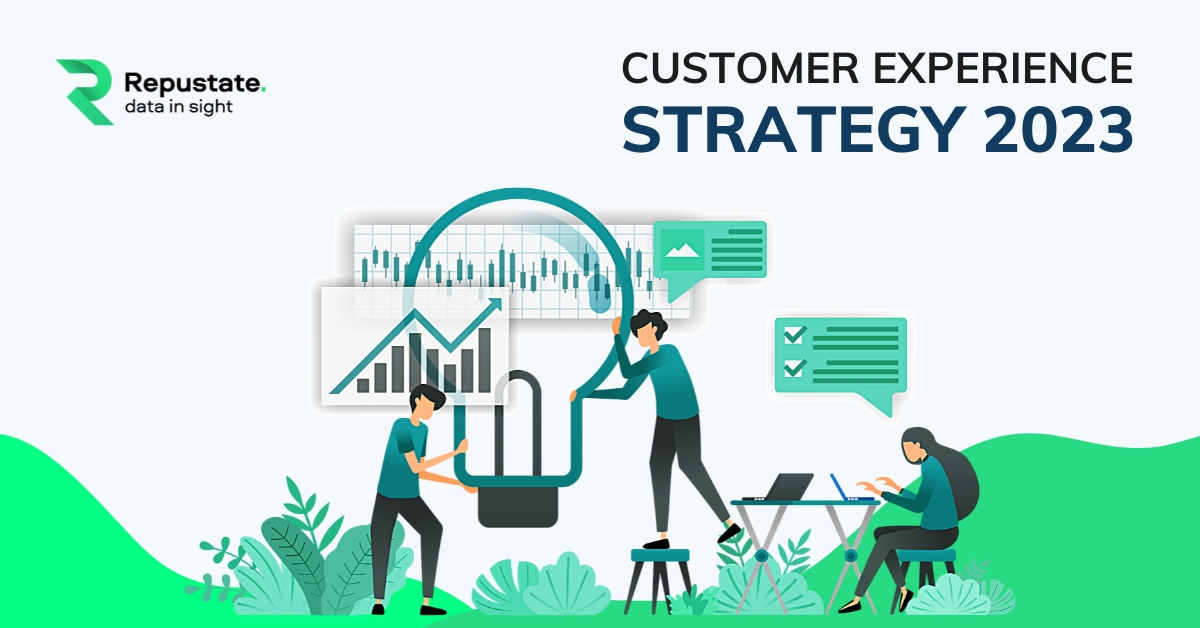Customer Experience Strategy 2023
Every brand needs to evaluate its customer experience (CX) strategy if it wants to ensure customer loyalty and drive growth. Afterall, a customer experience strategy revolves around the various stages of interactions customers have with a brand.
2020, 2021 and 2022 have been years, unlike others. And as the world reels and recovers from the Covid19 pandemic, both in terms of loss to personal safety as well as a decline in business growth, it makes sense to carve out a well-mapped plan to adapt to the new rules of engagement that a post-covid world demands.
In this article, we go beyond what is customer service experience, and highlight how with the help of artificial intelligence (AI) based technologies, you can be ready for the new normal in CX.
How Has Customer Service Experience Evolved Over Time?
What is customer service experience? It is but the total sum of a customer’s journey and his feelings about you, right from the moment he chooses your brand to aftersales. Customer experience (CX) has certainly evolved dramatically over time. Machine learning algorithms have made customer interactions and developing a consumer experience absolutely hassle-free. Right from selecting the music we like and making song lists individually for every customer like Spotify or YouTube do, to allowing search and rescue teams to locating lost vehicles and accident spots - all this happens with machine-learned algorithms running in the background. Artificial intelligence has taken CX to the next level seamlessly so much that many a time we take several functions like these for granted.
Some Examples of AI For CX
While a customer experience strategy can include having better return policies, product insurances, a smoother sales cycle, better store locations, many AI-based tools have become irreplaceable for improved customer engagement. For example, although talking to a human is more appealing to many people, especially those not comfortable with technology, chatbots have made CX very pleasant for some. Chatbots that allow you to choose multiple options to help sort out a complaint, or those that assist you in purchasing an item online, all were created to make the customer journey more swift and efficient.
Similarly, algorithms that scan through thousands of documents to counter fraud in financial or insurance systems are helping people, as well as financial institutions, avoid disasters. Another example, perhaps closer to home is how your Gmail sorts out promotional, social, and personal emails into separate folders without you ever having to do it. Even your Google photos get sorted into various categories, with personal suggestions. It’s because Google uses facial recognition software as well as natural language processing (NLP) to help make your documents more organized.
Yes, these are exciting times. Companies like you should look to leveraging AI-based technologies to boost your customer experience and customers will love you for it. So let’s delve deeper into what steps you can take to supercharge your CX in the coming year.
Learn how companies use customer experience insights.
What Do You Need To Supercharge Your Customer Experience Strategy For 2023?
You need to have clear objectives, understand your customers really well and develop buyer personas for more targeted campaigns. You need to train your customer support teams with the required tech and training as well. More importantly, you need to harness all the insights from your voice of the customer data with the help of sentiment analysis, and then use those insights to create a great CX strategy.
Let’s learn about it in detail.

1. Define your objectives
Before you begin planning anything about your CX strategy, you need to evaluate your objectives for the coming year. What is customer service experience in your books and to which aspects of your business does it pertain? We need to be cognizant of the fact that just because a business is B2B, it doesn’t need to be as vigilant as a B2C company.
Therefore, your objectives need to be top-down, meaning thereby that once formulated at the top tier corporate level, it needs to be followed through by all teams and stakeholders in the organization. Only then can you deliver a holistic customer experience.
Ask yourself why you are revamping your customer experience strategy - is it to drive more sales? Or is it to improve customer satisfaction and aftersales experiences? Are all your store locations in need of a general revamp, or do some require special attention? Apart from these pertinent questions, you also need to be cognizant of the overall budget assigned for this project.
2. Know your customers (Develop buyer personas)
Knowing your customers is so much more than those forms that are collected with the basic details of a customer - name, address, phone number, etc. To truly understand your customers, brands need to be savvy about their customers’ social media preferences and engagements, their likes and dislikes, and their opinions on things as diverse as climate change to fashion choices. Sentiment analysis on such data gathered from many different sources can pay you rich dividends.
It’s easy now to collect such data because people love to post their opinions on social media- whether it’s a quick user-generated video on TikTok or Facebook, or a review on Amazon or Twitter. You don’t need to struggle to get information about what is customer service experience to your customers, and their likes and dislikes. AI-powered video content analysis can inform you not only aspects related to your own brand, but also competitor brands or related products and services. Surveys, customer support emails, and chatbot histories provide great information as well.
Armed with these rich insights, It is a smart idea to create customer personas so that you can develop targeted advertising and marketing campaigns. This will boost the effectiveness of your branding initiatives.
3. Invest in your customer support team
The most important thing to remember as you prepare your customer experience strategy is that you give your customer as many avenues as possible to get in touch with you. There’s nothing more frustrating than when a customer needs help/information and can’t find anyone to assist them. This is as relevant to in-person sales as it is in an online scenario.
Customer support teams need to be properly trained in protocols and you need to make sure that there is continual support and training provided to them as well. Your customer support team needs to be well-versed in the languages your customers communicate in, as well as in technology. One of the pet peeves customers have with call centres is that after a long wait they end up speaking to a representative they cannot understand.
This has lead to companies setting up local support centres instead of outsourcing them. Automated tele-help systems have been a good alternative in such situations.
4. Leverage AI-based platforms and tools
AI-based technologies are your best friend. They increase efficiency manifold by removing human errors and have the ability to do a multitude of tasks at a fraction of the cost it would take to have it done manually. The most popular and effective AI-based services you could take advantage of and include in your customer experience strategy include:
- Live chat assistants
These algorithms use natural language processing (NLP) and are cleverly written to help give customers a sense of interacting with a human. Because of the immediate assistance they provide thanks to predetermined answers to predetermined queries, chat assistants save time as well as give you tangible information as to what issues are arising more often, and where you need to give the extra attention.
- Surveys
Online surveys that you create can be a great way to get data from customers about different aspects of your business, not just sales. Do your customers want more store hours? What is customer service experience and service quality in their books? Are they happy with your after-sales service? Do they need more variety in the products and services? Would they choose you over your competitors? These are key questions that you can ask your customers using NLP-based survey tools like Survey Monkey, and then process that information for analyzing sentiment.
- Sentiment Analysis
You are probably sitting on a gold mine of consumer insights already. All you have to do is harness it with an AI-based text analytics and sentiment analysis API. Social media sentiment analysis like Repustate IQ analyze sentiment in all forms of data - text (comments, surveys, emails, news), videos (TikTok, YouTube, Facebook, vlogs, video interviews), images (Instagram, Pinterest, google images), as well as audio (podcasts, call centre recordings).
5. Track your customer experience KPIs
Measure your key performance indicators to see how well your customer experience strategy is working. The three common metrics that are usually used are:
-
Net Promoter Score (NPS) – NPS is used to measure how willing your customers are to recommend you to their friends and family. It is usually done via a rating scale of 1 to 10.
-
Customer Effort Score (CES) – CES measures how easy it was for your customers to engage with your brand throughout the sales cycle. It is usually done through a 5-point scale starting from difficulty to ease.
-
Customer Satisfaction Score (CSAT) – CSAT measures customer opinions through what answers your customers have provided on surveys. CSAT works well on the questions that are objective and ask straightforward questions about satisfaction or dissatisfaction. As far as open-ended questions go, that’s a difficult ball game. An ML-based NLP-powered solution is your best bet because open-ended questions do not have predetermined answers and hence, need a lot more work than simple algorithms.
See how Repustate’s sentiment analysis platform handles the complexity in open-ended questions.
6. Revise your customer experience strategy accordingly
Continual improvement is the secret to longevity. Learning from the insights gained from emotion mining your voice of the customer data and formulating actions based on them can get you a long way towards a better and more satisfying customer experience for your patrons. You can use the findings from an AI-based customer sentiment analysis platform to:
-
Prepare for new market trends
-
Diversify your products and services
-
Hone customer engagement
-
Improve customer support initiatives
-
Be more alert to social media mentions
-
Learn more about how your customers feel about your competitors
Once you’ve made sure that all of the above are ticked off on your check-list as you revise your customer experience strategy, you will need to measure the effectiveness of it all, once again.
Discover more about customer experience analysis.
Make Your CX Journey Easy With AI
Customers are people. And people are fickle. So be proactive and frequent when it comes to gathering VoC data from your customers. This is as important as implementing a well-planned customer experience strategy. AI can improve the speed of your reaching efficiency and productivity but it also takes diligence and planning from your end. It can give you intelligent answers to what is customer service experience, and what you can gain from it.
If we have learnt anything from the past few years of Covid19 is that businesses are constantly treading on shifting sands. But thanks to AI and NLP, your journey towards a superior customer experience for your customers can lead you to a greater return on investment and a more rewarding familiarity with your customers.
 Home
Home
 Oct 14, 2021
Oct 14, 2021

 Jeremy Wemple
Jeremy Wemple
 Dr. Ayman Abdelazem
Dr. Ayman Abdelazem
 Dr. Salah Alnajem, PhD
Dr. Salah Alnajem, PhD
 David Allen
David Allen

 Repustate Team
Repustate Team

